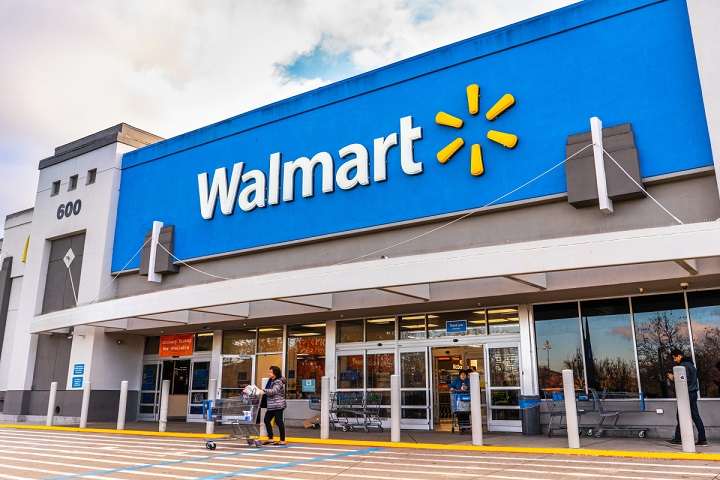In the ever-evolving landscape of retail, Walmart continues to push the boundaries of how customers interact with its stores. The latest move in this ongoing transformation is Walmart’s decision to charge customers for using self-checkout services. This development has stirred up a significant amount of conversation, and it’s worth exploring what this means for both the company and its customers. From the rationale behind this decision to its potential impacts, this article delves into every facet of this controversial new strategy.
The Evolution of Self-Checkout
Self-checkout systems have been a staple in many retail environments for years, offering a convenient, quick alternative to traditional cashier lines. Walmart introduced self-checkout in the early 2000s as a way to streamline the shopping experience and reduce labor costs. Over time, the service has become increasingly popular, with more and more customers opting to scan and bag their own items rather than wait in line for a cashier.
The Convenience Factor
One of the primary reasons for the success of self-checkout systems is the convenience they offer. Customers can control the pace of their checkout, avoid long lines, and often complete their purchases faster than they would through traditional checkout lanes. This level of autonomy has been particularly appealing during the COVID-19 pandemic when social distancing and minimizing contact with others became a priority.
Labor Savings for Retailers
For Walmart, self-checkout has also been a cost-saving measure. By encouraging customers to do the work that would otherwise be handled by employees, the company can reduce the number of cashiers needed on the floor. This shift has allowed Walmart to reallocate labor to other areas of the store or cut costs altogether.
Why Walmart is Considering Charging for Self-Checkout
Given the popularity and cost-saving benefits of self-checkout, many customers may wonder why Walmart would consider charging for this service. The answer lies in a combination of factors, including the need to offset losses from theft, the desire to create a more equitable shopping experience, and the broader trend of monetizing services that were once free.
Addressing Theft and Shrinkage
One of the biggest challenges retailers face with self-checkout is theft, often referred to as “shrinkage” in the industry. This can occur in various ways, from customers intentionally scanning items incorrectly or failing to scan them altogether, to simple mistakes made during the checkout process. According to the National Association for Shoplifting Prevention, shoplifting costs retailers billions of dollars annually, and self-checkout systems have made it easier for this to occur undetected.
By charging a fee for self-checkout, Walmart could potentially offset some of these losses. The idea is that customers who pay for the service may be less likely to engage in theft, either because they feel a greater sense of accountability or because the fee deters casual shoplifters. Additionally, the revenue generated from these fees could help cover the costs associated with shrinkage.
Creating a More Equitable Shopping Experience
Another reason behind this decision could be the desire to create a more equitable shopping experience. While self-checkout is convenient for some, it isn’t accessible to everyone. Older customers, individuals with disabilities, or those who simply prefer interacting with a cashier may feel excluded by the push toward self-service. By charging for self-checkout, Walmart could level the playing field, making the traditional checkout process more appealing by comparison.
Monetizing Convenience
In today’s economy, many companies are exploring ways to monetize convenience. From subscription services to premium shipping options, consumers are increasingly willing to pay for added convenience. Walmart may be betting that its customers, who are already accustomed to self-checkout, will see value in paying a small fee for the privilege of using the service. This move could align with the broader trend of companies charging for services that were once free, such as bank transactions or airline baggage handling.
The Potential Impact on Customers
While Walmart may have its reasons for implementing a fee for self-checkout, the decision is not without potential downsides. For customers, this change could represent an unwelcome additional cost, particularly for those who already feel the pinch of rising prices. It also raises questions about how customers will respond and whether they will continue to use self-checkout if it comes with a price tag.
Increased Costs for Shoppers
One of the most obvious impacts of this new policy is the increased cost for shoppers. While the fee for self-checkout is likely to be relatively small, it’s another added expense in an era where inflation and rising costs of living are already squeezing household budgets. Customers who frequently use self-checkout to save time may find themselves weighing the convenience against the cost.
Potential Backlash and Customer Dissatisfaction
Charging for self-checkout could also lead to customer dissatisfaction and potential backlash. Many people view self-checkout as a way to save time, and the idea of paying for a service that was previously free may not sit well with them. This could result in negative publicity for Walmart and potentially drive some customers to shop elsewhere, particularly at competitors who do not charge for self-checkout.
Changes in Shopping Behavior
Walmart’s decision to charge for self-checkout could also lead to changes in shopping behavior. Customers who are unwilling to pay the fee may choose to use traditional checkout lanes instead, which could result in longer lines and wait times. Alternatively, some shoppers may reduce their frequency of visits to Walmart, opting for retailers that offer free self-checkout or more favorable terms.
The Broader Implications for the Retail Industry
Walmart’s move to charge for self-checkout could have ripple effects throughout the retail industry. As one of the largest and most influential retailers in the world, Walmart often sets trends that other companies follow. If this strategy proves successful, it’s possible that other retailers may adopt similar policies, leading to a broader shift in how self-checkout is offered and priced.
A New Revenue Stream for Retailers
If Walmart’s experiment with charging for self-checkout is successful, it could open the door for other retailers to explore similar revenue streams. In an industry where margins are often thin, finding new ways to generate income is always a priority. Charging for self-checkout could become a standard practice, with retailers of all sizes implementing fees for the convenience of using these systems.
The Future of Automation in Retail
Walmart’s decision to charge for self-checkout also raises questions about the future of automation in retail. As technology continues to advance, more and more aspects of the shopping experience are becoming automated, from cashier-less stores to AI-driven customer service. Charging for self-checkout could be seen as a step backward in this trend, potentially slowing the adoption of new technologies if customers are unwilling to pay for them.
Impacts on Employment
Finally, the move to charge for self-checkout could have implications for employment in the retail sector. If customers shift away from self-checkout in response to the fee, retailers may need to hire more cashiers to handle the increased demand for traditional checkout lanes. On the other hand, if the fee is successful and self-checkout remains popular, it could further reduce the need for cashier positions, accelerating the decline of this job category.
How Walmart Plans to Implement the Fee
While Walmart has not yet rolled out the self-checkout fee nationwide, the company is reportedly testing the concept in select markets. The details of how the fee will be implemented are still being worked out, but it’s expected to be a flat fee charged per transaction rather than a per-item fee. The amount of the fee will likely vary depending on the market and other factors, such as the time of day or the volume of transactions.
Rollout Strategy
Walmart’s rollout strategy for the self-checkout fee will be crucial to its success. The company will need to carefully monitor customer reactions and make adjustments as needed to avoid alienating its core customer base. Walmart is known for its extensive data analytics capabilities, and it’s likely that the company will use this data to fine-tune the fee structure and identify the optimal pricing strategy.
Communicating with Customers
Clear communication with customers will also be key to the success of this new policy. Walmart will need to explain the rationale behind the fee and emphasize the benefits of using self-checkout, such as faster service and reduced wait times. If customers understand why they are being charged and see the value in the service, they may be more willing to accept the fee.
Related Post:
The Ultimate Guide to McDonald’s $12 Dinner Box: A Delicious and Affordable Feast
Understanding the Social Security COLA 2025 Payment Schedule
I Like the Way You Kiss Me, Artemas”: Exploring the Magic Behind the Words
Walmart’s decision to charge for self-checkout represents a bold move in the world of retail. While the company has valid reasons for implementing the fee, including addressing theft, creating a more equitable shopping experience, and monetizing convenience, the decision is not without risks. Customers may push back against the added cost, leading to changes in shopping behavior and potential backlash.




